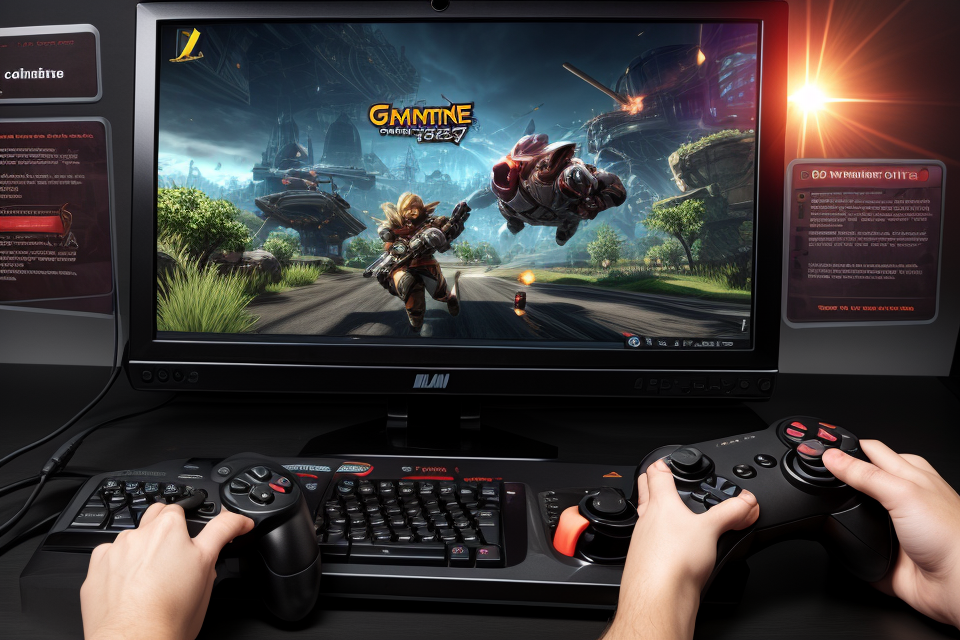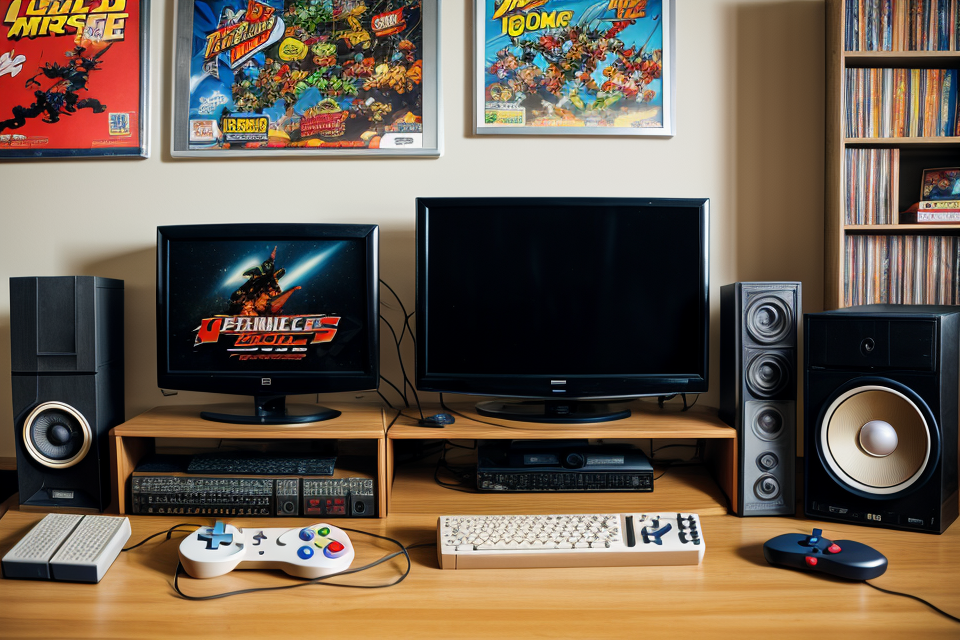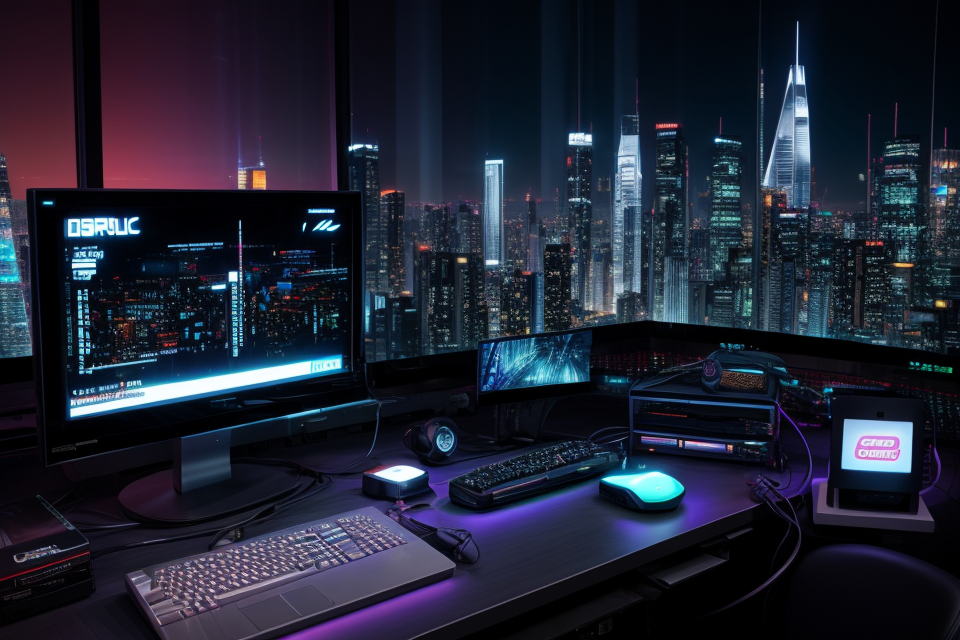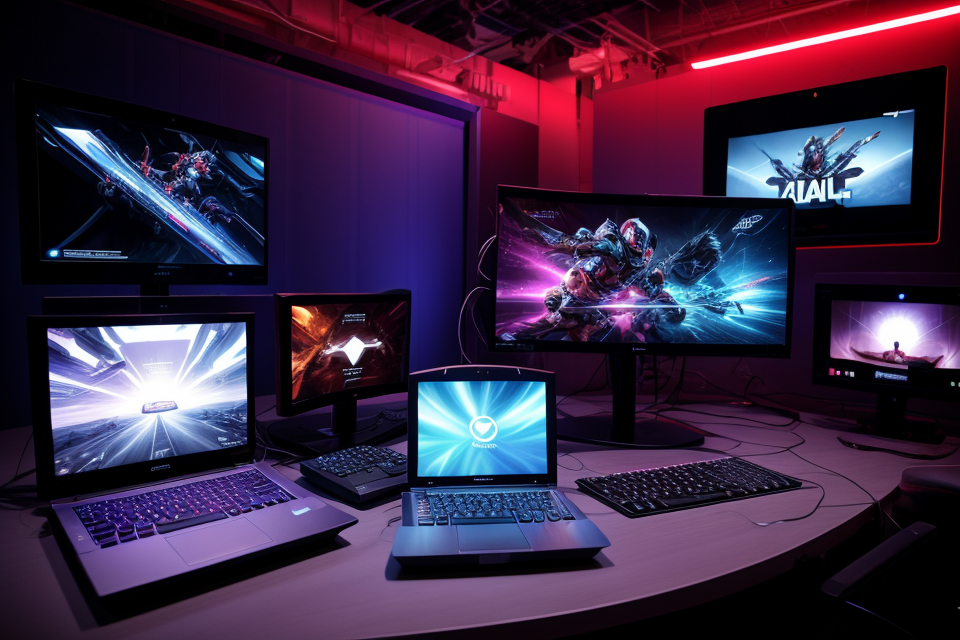
Are you ready to take your gaming experience to the next level? Then you’re in the right place! This guide is all about understanding the ins and outs of game drivers and why they’re crucial for a seamless gaming experience. With the right game drivers, you can enjoy smoother gameplay, vibrant graphics, and an overall enhanced gaming experience. But what exactly are game drivers, and which ones do you need? Let’s dive in and find out!
What are Game Drivers?
How do Game Drivers Affect Game Compatibility?
Game drivers, also known as video drivers or graphics drivers, are software components that manage the interaction between the operating system and the graphics hardware. They are responsible for translating the graphical instructions from the operating system into a language that the graphics hardware can understand and execute. Game drivers play a crucial role in game compatibility, as they determine how well a game will run on a particular computer system.
The relationship between game drivers and hardware devices is critical to game compatibility. Game drivers must be specifically designed to work with the graphics hardware installed on a computer. For example, a game driver designed for an NVIDIA graphics card will not work with an AMD graphics card, and vice versa. This is because each graphics hardware manufacturer has its own unique architecture and design, and game drivers must be tailored to work with these specific hardware components.
Game drivers can have a significant impact on game performance and stability. If a game driver is not compatible with the graphics hardware or operating system, games may run poorly or experience crashes and errors. On the other hand, if a game driver is optimized for a particular game or hardware configuration, it can enhance game performance and provide a smoother gaming experience. Therefore, it is essential to ensure that the correct game drivers are installed for optimal game compatibility.
What Type of Game Drivers Do I Need?
Graphics Drivers
Graphics drivers are an essential component for gaming as they are responsible for rendering images and videos on your computer screen. Without the right graphics driver, your game may not run smoothly or may even crash. In this section, we will discuss why graphics drivers are crucial for gaming and how to identify the right graphics driver for your game.
Why Graphics Drivers are Essential for Gaming
Graphics drivers are essential for gaming because they manage the interaction between the graphics card and the operating system. They are responsible for rendering images and videos on your computer screen, and without the right graphics driver, your game may not run smoothly or may even crash. Additionally, graphics drivers can also affect the performance of your graphics card, which can impact your gaming experience.
How to Identify the Right Graphics Driver for Your Game
Identifying the right graphics driver for your game can be a daunting task, but there are a few things you can do to make the process easier. First, check the system requirements for your game to see which graphics card is recommended or required. Then, go to the manufacturer’s website and download the latest graphics driver for your graphics card. Before installing the driver, make sure to check if it is compatible with your operating system and game.
It is also important to note that some games may require specific graphics drivers to run smoothly. For example, some games may require a specific version of the NVIDIA GeForce graphics driver, while others may require a specific version of the AMD Radeon graphics driver. Therefore, it is important to check the game’s system requirements to ensure that you have the right graphics driver installed.
Common Issues with Graphics Drivers and How to Troubleshoot Them
Even with the right graphics driver, you may still encounter issues while gaming. Some common issues with graphics drivers include screen flickering, graphical glitches, and game crashes. To troubleshoot these issues, you can try updating your graphics driver to the latest version, checking for conflicts with other software, or adjusting your graphics settings in the game.
In some cases, you may need to roll back to a previous version of the graphics driver or even update your operating system. It is also important to check for any updates or patches for your game to ensure that it is running smoothly.
In conclusion, graphics drivers are essential for gaming as they are responsible for rendering images and videos on your computer screen. To ensure the best gaming experience, it is important to identify the right graphics driver for your game, check for compatibility with your operating system and game, and troubleshoot any issues that may arise.
Audio Drivers
The Importance of Audio Drivers for an Immersive Gaming Experience
Audio drivers play a crucial role in enhancing the overall gaming experience. They are responsible for processing and transmitting audio signals from the game to the speakers or headphones. High-quality audio drivers can provide an immersive and realistic audio experience, making the game more engaging and enjoyable.
Choosing the Right Audio Driver for Your Game
Selecting the right audio driver is essential for optimal game performance. There are various audio drivers available, each with its own unique features and capabilities. Some of the factors to consider when choosing an audio driver include compatibility with your operating system, the type of audio output, and the level of sound quality required.
It is recommended to use audio drivers provided by the game developer or the manufacturer of your sound card. These drivers are designed to work optimally with the specific game or hardware, ensuring maximum performance and compatibility.
How to Optimize Audio Settings for Better Game Performance
Optimizing audio settings can significantly improve game performance and enhance the overall gaming experience. Here are some tips to help you optimize your audio settings:
- Adjust the volume levels: Ensure that the volume levels for your speakers or headphones are set appropriately.
- Configure audio mixer settings: The audio mixer settings allow you to control the volume levels of different audio elements, such as dialogue, music, and sound effects. Adjust these settings to achieve the desired balance.
- Enable surround sound: If your audio driver supports surround sound, enable it to enhance the immersive experience.
- Test your audio settings: Test your audio settings by playing a few minutes of the game to ensure that the audio is functioning correctly and the volume levels are appropriate.
By optimizing your audio settings, you can enjoy a more immersive and engaging gaming experience, with clear and crisp audio that adds to the overall excitement of the game.
Other Essential Game Drivers
Apart from the graphics and sound drivers, there are other essential game drivers that you may need to ensure optimal game compatibility and performance. These drivers include network drivers and storage drivers.
Network Drivers
Network drivers are responsible for managing the communication between your game and the internet. In online multiplayer games, network drivers play a crucial role in ensuring that your game runs smoothly and without any lag. If your game requires an internet connection, then you will need to ensure that your network drivers are up to date.
Storage Drivers
Storage drivers are responsible for managing the storage and retrieval of data on your computer’s hard drive or solid-state drive. In some games, storage drivers can impact game performance, especially in games that require fast data access. Ensuring that your storage drivers are up to date can help improve game performance and reduce loading times.
How to Identify and Install the Right Drivers for Your Game
Identifying and installing the right drivers for your game can be a daunting task, especially if you are not familiar with the process. Here are some steps you can follow to ensure that you install the right drivers for your game:
- Check the game’s system requirements: Before you start installing drivers, check the game’s system requirements to see which drivers you need to install.
- Visit the manufacturer’s website: Visit the website of the manufacturer of the driver you need to install. Download the latest version of the driver and follow the installation instructions.
- Check for conflicts: Before installing a new driver, check for any conflicts with other drivers or software on your computer. If there are any conflicts, try to resolve them before installing the new driver.
- Test the game: Once you have installed the new driver, test the game to ensure that it runs smoothly and without any issues.
The Impact of Other Drivers on Game Compatibility and Performance
Other drivers on your computer can impact game compatibility and performance. Ensuring that all your drivers are up to date can help improve game performance and reduce the risk of game crashes or freezes. It is also important to ensure that there are no conflicts between different drivers, as this can negatively impact game performance.
In conclusion, other essential game drivers, such as network drivers and storage drivers, can impact game compatibility and performance. Ensuring that these drivers are up to date can help improve game performance and reduce the risk of game crashes or freezes.
How to Install Game Drivers?
Step-by-Step Guide to Installing Game Drivers
Installing game drivers can seem like a daunting task, but with the right steps, it can be done easily and safely. Here is a step-by-step guide to help you install game drivers:
- Download the Latest Version of the Game Driver
The first step is to download the latest version of the game driver from the manufacturer’s website. This ensures that you have the most up-to-date driver that is compatible with your system.
- Disable Any Active Antivirus Software
Before installing the game driver, it is important to disable any active antivirus software on your computer. This is because some antivirus programs may interfere with the installation process and cause issues.
- Locate the Driver File
Once you have downloaded the game driver, locate the driver file on your computer. It is usually saved in a folder such as “Downloads” or “Documents”.
- Extract the Driver File
If the driver file is compressed, extract it to a safe location on your computer. This will allow you to access the files easily during the installation process.
- Run the Installation Wizard
Double-click on the extracted driver file to launch the installation wizard. Follow the prompts to install the driver onto your system.
- Restart Your Computer
After the installation is complete, restart your computer to ensure that the new driver is properly installed and functioning.
- Run a Compatibility Test
Finally, run a compatibility test to ensure that the game driver is working correctly. This can be done by launching the game and checking for any errors or issues.
By following these steps, you can safely and easily install game drivers on your computer. If you encounter any issues during the installation process, it is important to seek help from the manufacturer’s support team or online forums to resolve the issue.
How to Update Game Drivers?
Why updating game drivers is important for compatibility and performance
Updating game drivers is essential for ensuring compatibility and optimal performance of your gaming system. This is because game developers regularly release updates to improve game performance, add new features, and fix bugs. Therefore, it is crucial to keep your game drivers up-to-date to enjoy the best gaming experience.
How to check for and install updates for your game drivers
Checking for and installing updates for your game drivers is a straightforward process. First, visit the website of the manufacturer of your graphics card or motherboard, depending on which driver you need to update. Look for the latest version of the driver and download it to your computer. Once the download is complete, follow the installation instructions provided by the manufacturer to install the update. It is important to ensure that you install the correct driver for your system to avoid compatibility issues.
Common issues with driver updates and how to troubleshoot them
Although updating game drivers is generally a straightforward process, there are some common issues that you may encounter. One of the most common issues is compatibility issues between the new driver and your gaming system. To troubleshoot this issue, try rolling back to the previous driver version or contacting the manufacturer for assistance. Another common issue is that the update process may fail due to system errors or interruptions. To troubleshoot this issue, try restarting your computer and attempting the update again. Additionally, some updates may cause conflicts with other software on your system. To troubleshoot this issue, try uninstalling the conflicting software or updating it to a compatible version.
Troubleshooting Game Driver Issues
Identifying and Fixing Common Game Driver Issues
Game driver issues can arise due to various reasons, including outdated drivers, compatibility problems, or conflicts with other software. To identify and fix common game driver issues, follow these steps:
- Check for driver updates: The first step in troubleshooting game driver issues is to ensure that you have the latest drivers installed. Manufacturers regularly release updates to improve performance, fix bugs, and add support for new games and hardware. Check the manufacturer’s website for the latest driver updates and install them accordingly.
- Run driver compatibility tests: Some games may require specific graphics or sound drivers to run properly. Performing a compatibility test can help identify which drivers work best with your game. To do this, you can use the manufacturer’s driver compatibility tool or download third-party software such as Game Ready or Game Booster.
- Disable overlays and other software: Overlays, such as Steam’s in-game overlay or Discord’s overlay, can sometimes interfere with game performance. Temporarily disable any overlays or other software that may be running in the background to see if it resolves the issue.
- Update other software: Other software on your computer can also interfere with game performance. Ensure that your operating system, graphics card, and other drivers are up to date. Updating your Windows OS can resolve issues with DirectX, which is essential for running games.
- Adjust game settings: Certain game settings, such as graphics quality or resolution, can impact performance. Adjust these settings to find a balance between visual quality and performance. Additionally, some games may have built-in tools to optimize performance, such as NVIDIA’s GeForce Experience or AMD’s Radeon Software.
- Check for hardware conflicts: Hardware conflicts can also cause game driver issues. Check for any conflicting hardware components, such as multiple graphics cards or sound cards, and disable or remove any unnecessary hardware.
- Run a clean boot: If none of the above steps resolve the issue, you can try running a clean boot. This involves restarting your computer and starting it in safe mode, then disabling all startup programs and services until the issue is resolved. This can help isolate which software or drivers are causing the conflict.
By following these steps, you can identify and fix common game driver issues, ensuring smoother gameplay and optimal performance.
When to Seek Professional Help
Identifying Complex Game Driver Issues
When attempting to troubleshoot game driver issues, it is important to first identify whether the problem is simple or complex. Simple issues can often be resolved by restarting your computer or updating your drivers. However, if you have tried these steps and the issue persists, it may be time to seek professional help.
Finding the Right Technical Support
If you do decide to seek professional help, it is important to find the right technical support. This may involve reaching out to the manufacturer of your computer or graphics card, or seeking assistance from a professional technician. When looking for technical support, it is important to find someone who is knowledgeable about gaming and has experience working with the specific game or hardware you are using.
Benefits of Seeking Professional Help
Seeking professional help can be beneficial for a number of reasons. For one, a professional technician or gaming community forum member may be able to identify and fix the issue more quickly than you could on your own. Additionally, they may be able to provide advice on how to prevent similar issues from occurring in the future.
It is important to remember that seeking professional help does not always mean spending money. Many manufacturers offer free technical support, and there are also numerous online forums and communities where you can seek assistance from other gamers who may have experienced similar issues.
In summary, if you have tried all the basic troubleshooting steps and are still experiencing game driver issues, it may be time to seek professional help. This can help you identify and fix the issue more quickly, and may also provide valuable advice on how to prevent similar issues in the future.
FAQs
1. What are game drivers?
Game drivers are software components that allow your computer to communicate with the hardware required to run games. These drivers are specific to the game and the hardware you are using.
2. Why do I need game drivers?
Game drivers are required to ensure compatibility between your computer’s hardware and the game you are trying to play. Without the appropriate game drivers, your computer may not be able to recognize the hardware required to run the game, resulting in errors or crashes.
3. Where can I find game drivers?
Game drivers can typically be found on the website of the game developer or publisher. If you are having trouble finding the appropriate drivers, you can also check the website of the hardware manufacturer or search for them online.
4. Can I use generic drivers instead of game drivers?
It is generally not recommended to use generic drivers instead of game drivers. Generic drivers are designed to work with a wide range of hardware and may not be optimized for gaming. Using the wrong drivers can result in compatibility issues and may cause errors or crashes.
5. How do I install game drivers?
Installing game drivers typically involves downloading the appropriate driver from the developer or manufacturer’s website, then following the instructions provided to install it on your computer. The specific process may vary depending on your operating system and the hardware you are using.
6. Can I use different game drivers for different games?
Yes, you can use different game drivers for different games. However, it is important to ensure that the drivers you are using are compatible with both your hardware and the game you are playing. Using incompatible drivers can result in errors or crashes.
7. Can I update my game drivers?
Yes, you can update your game drivers. It is generally a good idea to keep your drivers up to date, as newer versions may include bug fixes and compatibility improvements. You can typically download the latest drivers from the manufacturer’s website.
8. Can I uninstall game drivers?
Yes, you can uninstall game drivers. However, it is generally not recommended to do so unless you are experiencing issues with the drivers. Uninstalling the drivers may cause problems with compatibility and may result in errors or crashes.


